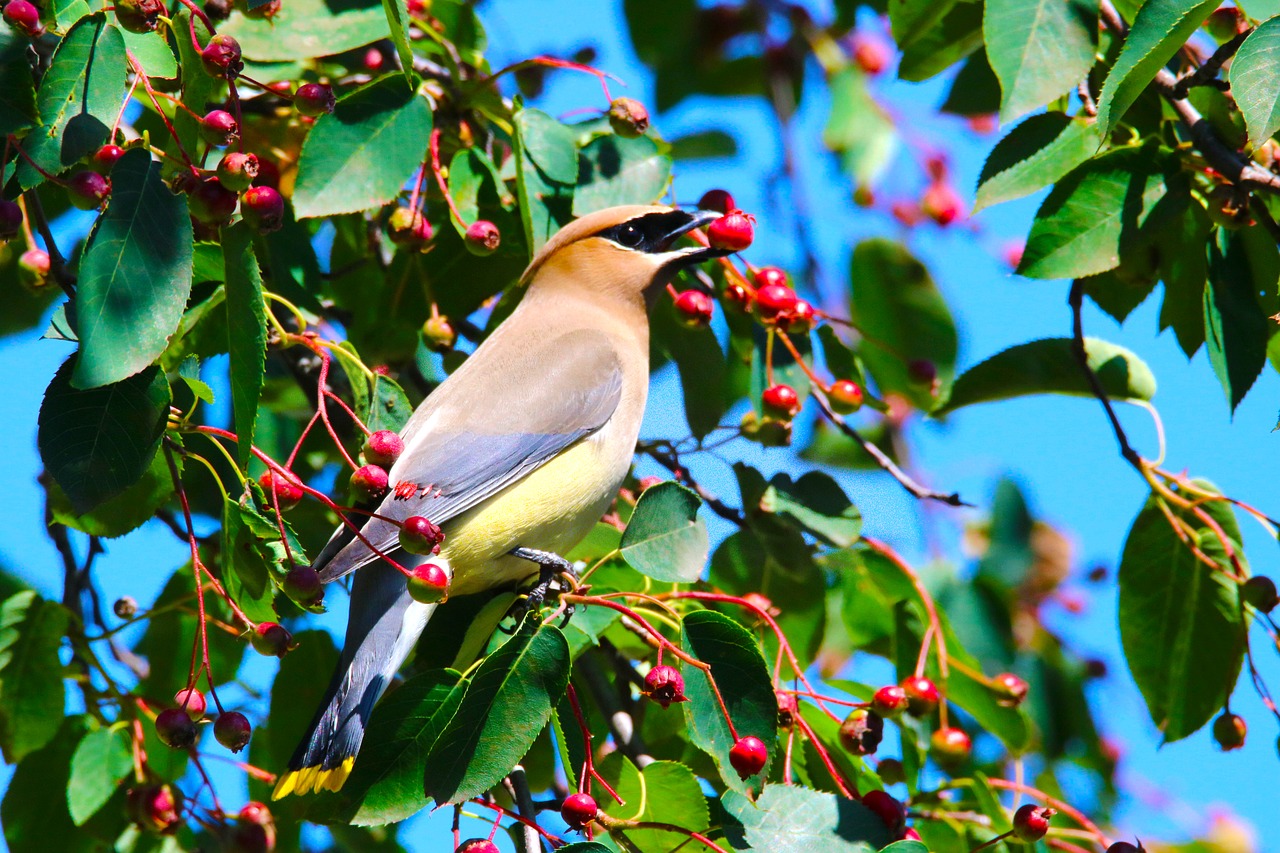Cedar Waxwings are birds you will usually hear before you see. They fly in flocks serenading us with high pitched whistling sounds that resemble a kettle boiling, ‘tseeee’. I must say it’s not the most beautiful song, but it’s certainly easy to recognize. Waxwings are striking birds with a silky fawn plumage. They have a velvety black mask over their eyes, a feathery crest, bright red droplets on their wing tips and a lemon-yellow edge on their tails. Some birds observed in southern Ontario have orange edging on their tails. This is a result from feeding on the berries of Eurasian Honeysuckles while their tail feathers are growing.

Cedar Waxwings are native to Central and North America. They breed in southern Ontario during the spring and summer months and winter in the southern United States and Central America. They prefer habitats of open forests with shallow streams for drinking and bathing.

Cedar Waxwings are one of the few birds in North America that feed mainly on fruit and can survive for months on this diet. They will eat berries whole without regurgitating the seeds. You can entice these sleek birds to your yard by planting native plants that bear small fruits such as dogwood, serviceberry, cedar and juniper. Waxwings have been known to become intoxicated from eating overripe berries that have started to ferment. I witnessed this one fall as a small flock consumed all of the berries on my choke cherry bush. It was quite the sight. Insects are also taken from mid-air or foliage.
Nesting starts in late spring and continues through mid summer. During courtship you may see a pair passing flower petals and insects to each other. The male will also hop to attract the females attention. Females mainly build the nest which is loosely composed of grass, weeds, plant fibres and twigs and lined with finer grass and animal hair. Males have occasionally been observed in the nest building process. The nest may be anywhere from 6 to 50 ft. from the ground on horizontal limbs or forks in the tree. Female Waxwings have been known to steal nesting materials from other birds’ nests to speed up the process. Three to five pale bluish grey, lightly spotted with black or brown, eggs are laid. The female will incubate these for 12-13 days. After hatching the young are fed by both parents and fledge the nest 14-18 days later. Waxwings may have two broods a year. The oldest Cedar Waxwing on record was 8 years, 2 months. Immature Waxwings may gather in large flocks close to their breeding areas for up to two months after the adults leave.

Cedar Waxwings are quite social. They will line up on a branch and pass berries to each another until one eats it. Except during breeding season these birds travel in large flocks. The male and female look alike. Waxwings are also attracted the sound of water. In addition to planting native fruit bearing trees and bushes, consider adding a small solar fountain to your bird bath and you will be able to enjoy these entertaining birds in your garden.
Happy Birding!
Author – Jane Paradis

Leave a Reply